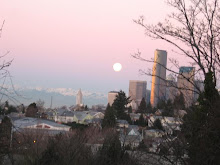I was invited to a party to celebrate Solstice, Christmas, Hanukkah, and all festival of Light. At the party, the host held the ceremony of light. She talked about festival of light from
European country and Africa . The couple of
participants read poems. All of us were told to turn off all lights in the
house. In dark house, we listened to her quiet speech and appreciated our
civilized life. After Yole log was lit in fire place then menorah candle was lit, we turned on
all light in the house. Then party ended with eating roasted turkey and delicious food brought by participants.
By the way, Japanese people believe cold winter starts around Solstice. People eat Kabocha and take
bath with Yuzu which is Japanese citrus fruit (http://en.wikipedia.org/wiki/Yuzu).
Kabocha add vitamins to their diet(http://www.vegparadise.com/highestperch10.html). Citrus bath keeps body warm. It's interesting to learn seasonal traditional customs is proven to be good and healthy.
Living In Seattle
In case that you
like to try it. Here is how my mother prepared winter bath:
Keep orange peel
after you eat fruit.
Dry it couple of
days (I am not sure this is necessary, but it may be induce fragrance.)
In Cheese cloth,
put the dried orange peel and tie knot.
Drop the orange
bag and fill bath tab with warm water.
Enjoy it.





